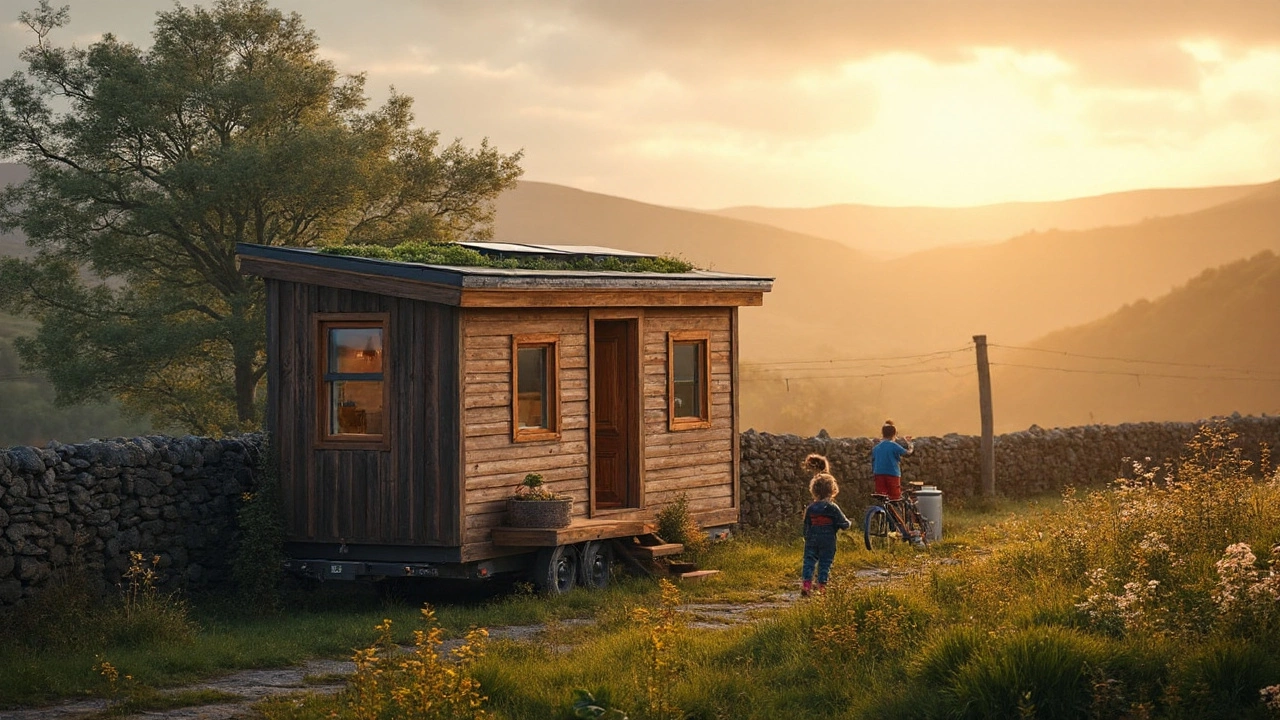Low Embodied Carbon – What It Means for Your Cottage Getaway
When you hear "low embodied carbon" you might picture a lab, but it’s actually just the amount of CO₂ that’s baked into a building from the moment its materials are made. For a cottage holiday, that hidden carbon can be a big part of the overall footprint, even before you turn on the lights. Knowing the basics helps you pick a place that’s greener from the ground up, not just because it’s in the countryside.
Look for Materials That Were Made With Less Energy
Old stone walls, reclaimed timber, and locally‑sourced bricks usually have lower embodied carbon than brand‑new concrete or imported steel. Ask the owner or check the listing for clues: phrases like “recycled wood”, “locally sourced stone”, or “heritage renovation” are good signs. If the cottage was built or refurbished in the last few years, the builder might have used timber frames or insulated panels that cut the carbon baked into the walls.
Even the type of floor matters. Bamboo flooring, for instance, grows fast and stores carbon while it’s alive, so it locks away CO₂ that would otherwise be in the atmosphere. A simple visual check – smooth, natural wood versus cheap laminate – can tell you a lot about the material’s origin.
Check the Energy Setup – It Tells a Story About Embodied Carbon Too
Many low‑carbon cottages pair good building materials with energy‑saving tech. Look for solar‑thermal water heaters, biomass stoves, or ground‑source heat pumps. Those systems don’t just cut the running carbon; they also often require greener construction methods. A cottage that boasts a “passive house” certification, for example, had to meet strict limits on heat loss, which usually means high‑performance insulation and airtight construction – both lowering embodied carbon.
If you can’t find that info online, send a quick email to the owner. A short ask like “What’s the heating source and were any sustainable materials used in the build?” often gets a clear answer. Owners who are proud of low‑carbon features will gladly share the details.
Choosing a low embodied carbon cottage isn’t about being perfect; it’s about making smarter choices that add up. A stone‑built cottage with a wood‑burning stove may still have a higher carbon bill than a modern timber‑frame home with solar panels, but the difference can be significant when you add up the whole stay.
When you book, consider the travel distance too. A cottage a bit farther away but built with local materials may still beat a nearby rental that shipped concrete blocks from overseas. Combine a low‑embodied‑carbon property with low‑impact travel – think train or carpool – and you’ll slash the total footprint of your holiday.
In short, keep an eye on three things: the source of the building materials, the energy system, and the distance you travel to get there. If the listing ticks at least two of those boxes, you’re likely staying in a cottage that respects the environment from the ground up. Enjoy the countryside, and feel good knowing your stay gave the planet a little breather.
How Tiny Houses Are Eco‑Friendly: Energy, Materials, and Real Numbers (2025)
Tiny houses cut energy, materials, water, and waste. See the numbers, design steps, and checks that actually make a tiny home eco-friendly in 2025.
- Sep, 16 2025
- 0 Comments
